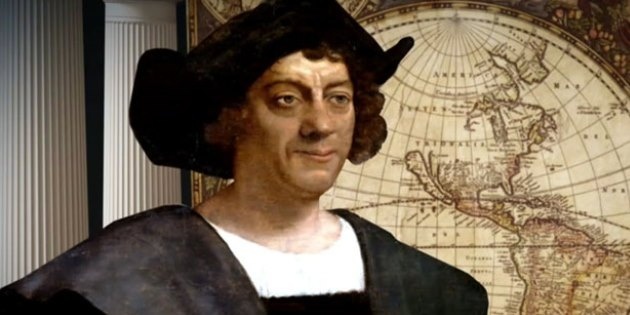
Columbus mapped the coasts of Central America and South America but never set foot on North America, and died thinking he had discovered Asia. He ruled the Caribbean islands as viceroy and governor so brutally that, according to US-History.com: “Even his most ardent admirers acknowledge that Columbus was self-centered, ruthless, avaricious and a racist.”
Columbus has long been believed to have been born in Genoa, Italy, though some historians think he was born in Spain’s Catalonia region. He sailed for the Spanish crown, and his remains are in Spain. Italians in the United States have taken great pride in him and sponsor many of the celebrations held in his name each year to honor Italian American heritage.
The first Columbus Day celebration recorded in the United States was held in New York in 1792 to honor Italian American heritage and to mark Oct. 12, 1492, the day that Columbus and his ships first made landfall on an island in the Caribbean Sea.
In 1892, President Benjamin Harrison issued a proclamation encouraging Americans to mark the 400th anniversary of Columbus’s voyage with patriotic festivities
In 1937, President Franklin Delano Roosevelt and Congress, bowing to lobbying by the Knights of Columbus, an influential Catholic group that wanted a Catholic hero to be honored, proclaimed Oct. 12 to be Columbus Day, a national holiday. In 1971, the holiday date was changed to the second Monday in October
Here are some things to know about Columbus:
*He didn’t prove that the earth is round.
Kids in school have long been taught that when Columbus set sail in 1492 to find a new route to the East Indies, it was feared that he would fall off the edge of the earth because people thought the planet was flat. Nope. As early as the 6th century B.C., Pythagoras — later followed by Aristotle and Euclid — wrote about earth as a sphere, and historians say there is no doubt that the educated in Columbus’s day knew quite well that the earth was round.
*Columbus didn’t “discover” America.
During four trips that started with the one in 1492, Columbus landed on various Caribbean islands that are now the Bahamas, as well as the island later called Hispaniola. He also explored the Central American and South American coasts. But he didn’t reach North America, which, of course, was inhabited by Native Americans, and he never thought he had found a new continent.
The famous names of the ships he took on his famous 1492 trip across the Atlantic Ocean, the Niña, the Pinta and the Santa Maria, probably weren’t really named Niña, Pinta and Santa Maria. The Santa Maria was also known at the time as La Gallega, meaning the Galician. The Niña is now believed to be a nickname for a ship originally called the Santa Clara, and the Pinta also was probably a nickname, though the ship’s real name isn’t clear.